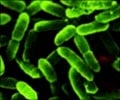
‘Clostridium paraputrificum produces reductases that flip a specific hydroxyl group present on carbon-12 in bile acid molecules. The human gut microbiome is found to produce the same by an exclusive set of genes.’
Tweet it Now
"Locating these bacterial genes will allow mechanistic studies to determine the effect of bile acid conversion on host health. If we find this is a beneficial reaction, therapeutic strategies can be developed to encourage the production of these bile acids in the gastrointestinal tract," says lead author Jason Ridlon, Associate professor in the Department of Animal Sciences at U of I. A flip by Clostridium paraputrificum
Bile acids are produced by the liver to help us digest fats and fat-soluble vitamins in the diet. Microbes at the end of our small intestine convert bile acids into other forms like deoxycholic acid (DCA) and lithocholic acid (LCA) which can either be beneficial or harmful. They do so by using enzymes that can turn over three hydroxyl groups on bile acid molecules.
Having identified genes that produce two of these enzymes, researchers from the University of Illinois used existing literature to arrive at a strategy in finding the last one. Clostridium paraputrificum is known to produce reductases that flip a specific hydroxyl group present on carbon-12 in bile acid molecules.
Thus, scientists identified all the genes that produced it, engineered them into E. coli, and looked for ones that can do the same. While the results from this experiment were applied to the human microbiome, it was found that many bacteria have genes with that particular bile acid metabolizing function.
Advertisement
Our knowledge about the gut microbiome has improved but, it is still not clear whether this kind of bile acid conversion through the flip of the hydroxyl group at carbon-12 is of any advantage for therapeutic applications.
Advertisement
Thus, Ridlon concludes, "A major goal of this research is trying to establish and maintain a 'Goldilocks zone' of bile acids - not too much or too little."
The study reveals some new insights into gut microbiome research. Further investigations about the end products of bile acid conversions will unravel links between the characteristics of the gut microbiome and the development of diseases.
Source-Medindia













